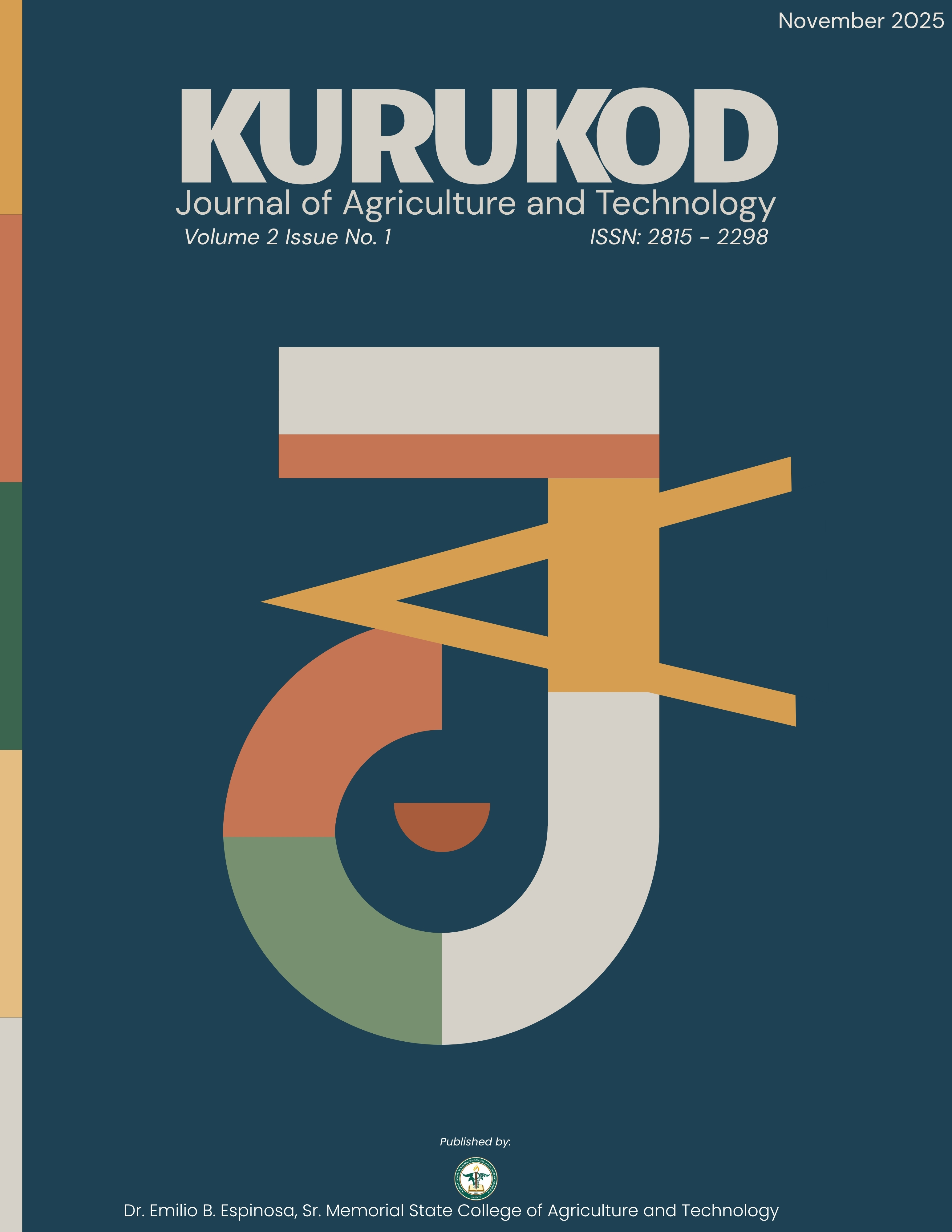Growth and Yield Performance of High-Yielding Sweet Potato (Ipomoea batatas L.) Varieties Applied with Biofertilizers
DOI:
https://doi.org/10.63798/kjat.v2i1/GaYPoH-YSPIbLVAwBKeywords:
biofertilizer, growth and yield performance, sustainable agriculture, sweet potato (Ipomoea batatas), variety evaluationAbstract
Sweet potato (Ipomoea batatas L.) is an important root crop valued for its adaptability, nutritional content, and economic significance, especially in developing countries. However, optimal yield and quality are often constrained by poor soil conditions and excessive reliance on chemical fertilizers. This study investigated the growth and yield performance of high-yielding sweet potato varieties under different biofertilizer applications. A total of 864 slips were planted across 72 plots (1.70 × 2.60 m² each) in a 6 × 3 factorial experiment arranged in a Randomized Complete Block Design (RCBD). Treatments included six fertilizer options: negative control (no biofertilizer), Indigenous Microorganisms (IMO), Lactic Acid Bacteria Serum (LABS), Seaweed Extract, Bokashi, and positive control (complete fertilizer), combined with three sweet potato varieties: NSIC SP 25, NSIC SP 30, and NSIC SP 35. Results revealed that both fertilizer treatments and varieties had significant effects (p < 0.05) on vine length, tuber length, and tuber yield. However, their interaction showed no significant effect on the parameters tested. Among the fertilizer treatments, the complete fertilizer exhibited the highest performance, while Bokashi and LABS produced comparable results. Among the varieties, NSIC SP 35 consistently performed best in tuber size, weight, and overall yield, achieving 14.24 tons/ha, while NSIC SP 25 and NSIC SP 30 produced 8.32 tons/ha and 6.95 tons/ha, respectively. Among the fertilizer treatments, complete fertilizer produced the highest vine length and tuber yield, while seaweed extract also enhanced performance. Bokashi and IMO showed potential as sustainable alternatives, though their effects varied numerically across varieties without significant interaction. Cost and return analysis indicated that NSIC SP 35 applied with LABS was the most profitable combination, yielding the highest return on investment (ROI) at 248.93%. The study concluded that combining a high-performing variety such as NSIC SP 35 with a suitable fertilizer source can result in notable gains in productivity and profitability.
Downloads
Downloads
Published
Issue
Section
License
Copyright (c) 2025 Zaldy C. Ibañez Jr. (Author)

This work is licensed under a Creative Commons Attribution-NonCommercial-NoDerivatives 4.0 International License.


